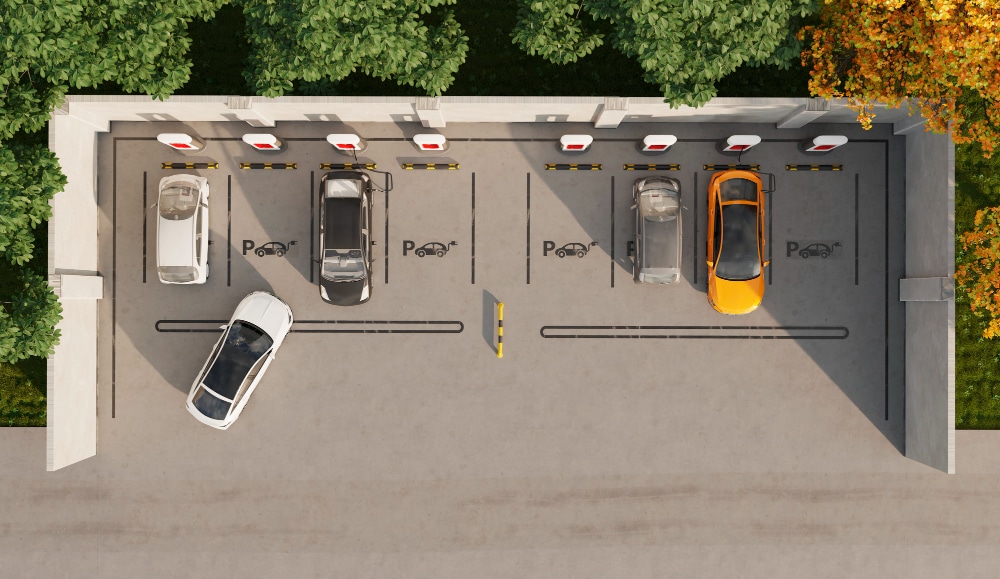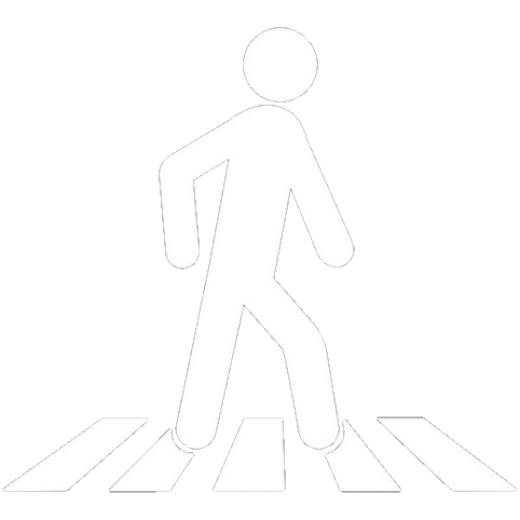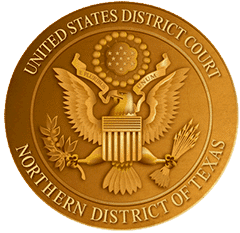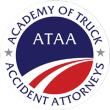Exiting parking spaces can sometimes be a confusing and frustrating experience, especially when it comes to determining the right of way. In the state of Texas, understanding the parking lot rules and regulations is essential to ensure a smooth and safe exit. This article aims to demystify the Texas parking lot rules, helping drivers navigate the complexities of right of way when exiting parking spaces.
Knowing who has the right of way can prevent accidents and reduce frustration for drivers. Whether it’s yielding to pedestrians, obeying stop signs, or understanding proper signaling, being knowledgeable about the rules can significantly impact your driving experience. By gaining a better understanding of the Texas parking lot rules, you’ll be able to navigate parking lots with confidence, ensuring a smooth and efficient exit every time.
Join us as we delve into the intricacies of Texas parking lot rules, clarifying the right of way and providing practical tips to navigate parking lots. Empower yourself with the knowledge you need to avoid unnecessary accidents and make your parking lot experience stress-free.
Understanding Right of Way in Parking Lots
When it comes to parking lots, right of way can be a bit different compared to regular roadways. In Texas, parking lots are considered private property, and the rules regarding right of way can vary depending on the specific parking lot and any posted signage. However, there are some general guidelines that can help drivers navigate parking lots safely and efficiently.
First and foremost, it’s important to yield to pedestrians. Pedestrians always have the right of way, whether they are walking in designated crosswalks or simply crossing the parking lot. As a driver, it’s your responsibility to watch out for pedestrians and give them enough time and space to safely cross your path. This means being patient and waiting for pedestrians to completely cross before proceeding.
In addition to pedestrians, it’s also important to yield to any vehicles that are already in the main flow of traffic. If you are exiting a parking space and there is a vehicle approaching from either direction, it’s courteous to wait for them to pass before pulling out. This helps maintain a smooth flow of traffic and prevents unnecessary delays or accidents.
Another aspect of right of way in parking lots is the use of stop signs. Many parking lots have stop signs at various intersections or pedestrian crossings. It’s crucial to obey these stop signs and come to a complete stop before proceeding. Failure to stop at a stop sign can result in accidents and legal consequences. Always remember to check for any oncoming traffic or pedestrians before proceeding through a stop sign.
Understanding the proper use of signaling is also essential in parking lots. When exiting a parking space, it’s important to use your vehicle’s turn signals to indicate your intention to turn left or right. This allows other drivers to anticipate your movements and adjust their own driving accordingly. Signaling is not only a legal requirement but also a common courtesy that promotes safe and efficient traffic flow within parking lots.
Texas Laws Regarding Parking Lot Exits
While parking lot rules can vary depending on the specific parking lot and any posted signage, there are some general laws in Texas that govern right of way when exiting parking spaces. It’s important to familiarize yourself with these laws to ensure you are driving within the legal boundaries.
According to Texas Transportation Code §545.155, drivers exiting an alley, driveway, or private road must yield the right of way to any approaching vehicle or pedestrian that is close enough to be a hazard. This means that if there is a vehicle or pedestrian approaching your exit, you must wait for them to pass before pulling out.
Additionally, Texas Transportation Code §545.156 states that drivers exiting a private road or driveway must stop before entering the sidewalk area and yield the right of way to any pedestrians on the sidewalk. This law emphasizes the importance of giving pedestrians ample space and time to safely navigate the parking lot.
It’s worth noting that parking lot exits that intersect with public roadways are subject to the same right of way rules as regular intersections. This means that if you are exiting a parking lot onto a public road, you must yield to any oncoming traffic and follow the regular rules of the road.
To ensure compliance with Texas parking lot laws, it’s important to pay attention to any posted signage and follow the instructions provided. Many parking lots have specific rules and regulations that drivers must adhere to, such as designated entrance and exit lanes, one-way traffic flow, and speed limits. Ignoring these rules can not only result in accidents but also potential legal consequences.

Common Misconceptions About Right of Way in Parking Lots
There are several common misconceptions about right of way in parking lots that can lead to confusion and potential accidents. By understanding these misconceptions, you can better navigate parking lots and avoid unnecessary conflicts with other drivers.
One common misconception is that the driver who backs out of a parking space always has the right of way. While it may seem logical to assume that the driver who is already in motion should have the right of way, this is not always the case. In parking lots, right of way is determined by the flow of traffic and the presence of pedestrians. If another vehicle or pedestrian is approaching your exit, you must yield to them, regardless of whether you are in motion or not.
Another misconception is that the driver who arrives at an intersection first has the right of way. While this is generally true for regular roadways, parking lots can have different rules. In parking lots, the right of way is often determined by the flow of traffic and the presence of pedestrians. Even if you arrive at an intersection first, you must yield to any approaching vehicles or pedestrians that are already in the main flow of traffic.
It’s also important to debunk the misconception that right of way in parking lots is a free-for-all, where drivers can simply assert their dominance and ignore the rules. In reality, parking lots require careful navigation and adherence to the established rules and regulations. Failure to yield the right of way can lead to accidents, injuries, and legal consequences.
In conclusion, understanding the right of way in Texas parking lots is crucial for a safe and stress-free driving experience. By familiarizing yourself with the general guidelines and laws, you can navigate parking lots with confidence, ensuring a smooth and efficient exit every time. Remember to yield to pedestrians, obey stop signs, use proper signaling, and follow any posted signage. By following these guidelines, you’ll be well-equipped to handle any parking lot situation, promoting safety for yourself and others on the road.
Tips for Safely Navigating Parking Lots in Texas
Navigating parking lots can be challenging, but by following some key tips, you can make your experience safer and less stressful. Firstly, always drive at a cautious speed when maneuvering through parking lots. Many parking lots have signs indicating speed limits, and it’s important to adhere to them to prevent accidents and ensure the safety of pedestrians.
Additionally, it’s crucial to be aware of your surroundings and constantly scan for pedestrians and other vehicles. Parking lots can be busy, and pedestrians can emerge from unexpected places. Always yield to pedestrians in crosswalks and give them the right of way. It’s better to be patient and wait for them to cross rather than risking an accident.
When approaching intersections or stop signs within parking lots, always come to a complete stop and yield to any vehicles or pedestrians who have the right of way. This includes yielding to vehicles already in the main lanes when you are exiting a parking space. Failure to yield can result in accidents and legal consequences.
Remember to use your turn signals when turning or changing lanes within a parking lot. Signaling your intentions can help other drivers anticipate your movements, reducing the likelihood of collisions. Use your mirrors and check blind spots before changing lanes or backing out of parking spaces.
In conclusion, to safely navigate parking lots in Texas, drive at a cautious speed, be aware of pedestrians, yield to vehicles with the right of way, and use your signals when turning or changing lanes. Following these tips will help make your parking lot experience smoother and reduce the risk of accidents.
Legal Consequences for Violating Parking Lot Rules in Texas
Violating parking lot rules in Texas can have legal consequences, and it’s important to understand the potential penalties to avoid unnecessary fines and complications. While parking lots may seem like private property, they are still subject to traffic laws, and violations can result in citations.
One common violation is failing to yield the right of way. Texas law requires drivers to yield to other vehicles and pedestrians who have the right of way, whether they are in a parking lot or on the road. If you fail to yield and cause an accident, you may be held liable for any damages or injuries that result from your negligence.
Another violation that can have legal consequences is reckless driving within a parking lot. Reckless driving includes excessive speeding, aggressive behavior, and disregarding traffic signs and signals. If caught driving recklessly in a parking lot, you can be cited and face fines, points on your driving record, and even license suspension.
Parking violations, such as parking in disabled spots without the proper permits, can also result in fines and potential towing of your vehicle. It’s crucial to respect designated parking spaces and follow the rules and signage provided.
In conclusion, violating parking lot rules in Texas can lead to legal consequences, including fines, points on your driving record, and potential license suspension. It’s important to understand and follow the rules to avoid unnecessary penalties and ensure the safety of yourself and others in parking lots.

Importance of Respecting Pedestrians in Parking Lots
Respecting pedestrians in parking lots is not only a matter of following the law but also a crucial aspect of ensuring the safety and well-being of everyone involved. Pedestrians have the right of way in designated crosswalks, and drivers must yield to them to prevent accidents and injuries.
When approaching a crosswalk, always be prepared to stop and allow pedestrians to cross. This includes both marked and unmarked crosswalks. Always be vigilant and look for pedestrians who may be crossing, even if they are not at a designated crosswalk.
It’s important to remember that pedestrians may be vulnerable and less visible, especially children or individuals with disabilities. It’s your responsibility as a driver to be patient and considerate, allowing them to cross safely without feeling rushed or endangered.
Additionally, be mindful of distracted pedestrians who may be unaware of their surroundings. They may be looking at their phones or engaging in other distractions, making it crucial for drivers to be extra cautious and anticipate their actions.
By respecting pedestrians in parking lots, you not only comply with the law but also contribute to creating a safer environment for everyone. Always yield to pedestrians, be attentive, and exercise patience to avoid accidents and maintain a harmonious parking lot experience.
How to Handle Disputes Over Right of Way in Parking Lots
Disputes over right of way in parking lots can lead to tense situations and potential accidents. It’s important to understand the rules and guidelines to handle these situations effectively. Here are some key points to keep in mind:
1. Yield to Pedestrians
In parking lots, pedestrians have the right of way. As a driver, you must always yield to pedestrians crossing your path, whether they are within a designated crosswalk or not. This means you should come to a complete stop and allow the pedestrian to safely cross before proceeding. It’s crucial to be alert and watch for pedestrians, especially in busy parking lots where there may be a lot of foot traffic.
2. Obey Stop Signs and Yield Signs
Stop signs and yield signs are common in parking lots to regulate traffic flow and ensure safety. When approaching a stop sign, you must come to a complete stop and yield the right of way to any vehicles or pedestrians who have already entered the intersection or are approaching from other directions. Similarly, when approaching a yield sign, you must slow down and be prepared to stop if necessary, allowing other vehicles or pedestrians with the right of way to proceed before you.
3. Use Proper Signaling
Signaling your intentions is crucial in parking lots to communicate with other drivers and pedestrians. When exiting a parking space, use your turn signal to indicate your direction of travel. This allows others to anticipate your actions and adjust accordingly. It’s important to signal early and clearly, giving others enough time to react. Remember, failing to use proper signaling can lead to confusion and potential accidents.
4. Be Patient and Courteous
In parking lots, it’s important to be patient and courteous to other drivers. Avoid rushing or aggressive behaviors that can escalate tensions and increase the risk of accidents. Yield the right of way when necessary, even if you believe you have the legal right to proceed. Being considerate of others can help create a safer and more pleasant parking lot environment for everyone.
5. Seek Assistance if Needed
If you find yourself in a dispute over right of way in a parking lot, it’s best to seek assistance rather than engaging in a confrontation. Many parking lots have security personnel or attendants who can help resolve conflicts and ensure a fair resolution. If there is no immediate assistance available, consider documenting the incident with photos or videos and report it to the appropriate authorities.
Remember, disputes over right of way can quickly escalate, leading to unnecessary stress and potential harm. It’s always better to prioritize safety, follow the rules, and seek assistance when needed.
Resources for Learning More about Texas Parking Lot Rules
To further enhance your knowledge and understanding of Texas parking lot rules, here are some resources that can provide additional information:
1. Texas Department of Public Safety (DPS)
The Texas DPS website offers a wealth of information on traffic laws and regulations, including rules specific to parking lots. Visit their website at www.dps.texas.gov and navigate to the “Driver License” or “Traffic Safety” section to find relevant resources and publications.
2. Texas Department of Transportation (TxDOT)
The TxDOT website is another valuable resource for learning about parking lot rules in Texas. They provide information on various transportation-related topics, including parking regulations and guidelines. Visit their website at www.txdot.gov and search for keywords such as “parking regulations” or “parking lot rules” to access relevant information.
3. Local Traffic and Parking Regulations
Additionally, it’s important to familiarize yourself with any local traffic and parking regulations specific to the city or county where you reside or frequently visit. Local ordinances may have additional rules or restrictions that apply to parking lots. Check the official website of your city or county government for information on parking regulations and any available resources.
By utilizing these resources, you can stay informed about the latest parking lot rules and regulations in Texas, ensuring a safe and compliant driving experience.

Conclusion: Promoting Safer and More Efficient Parking Lot Experiences in Texas
Navigating parking lots can be a challenging task, especially when it comes to determining the right of way. However, by understanding the Texas parking lot rules and regulations, you can confidently navigate these spaces with ease. Remember to yield to pedestrians, obey stop signs and yield signs, use proper signaling, and be patient and courteous to other drivers.
In situations where disputes over right of way arise, seek assistance from parking lot attendants or security personnel to ensure a fair resolution. Utilize the available resources, such as the Texas DPS and TxDOT websites, to enhance your knowledge and stay up to date with parking lot rules in Texas. By promoting safer and more efficient parking lot experiences, we can create a positive driving environment for everyone in the Lone Star State.





























